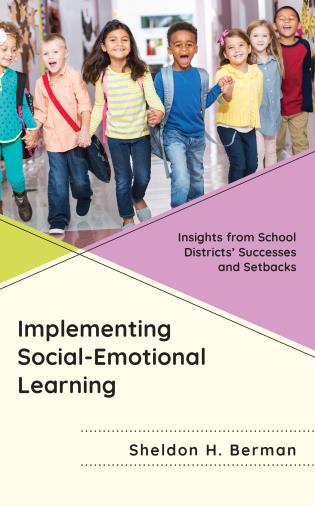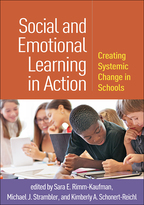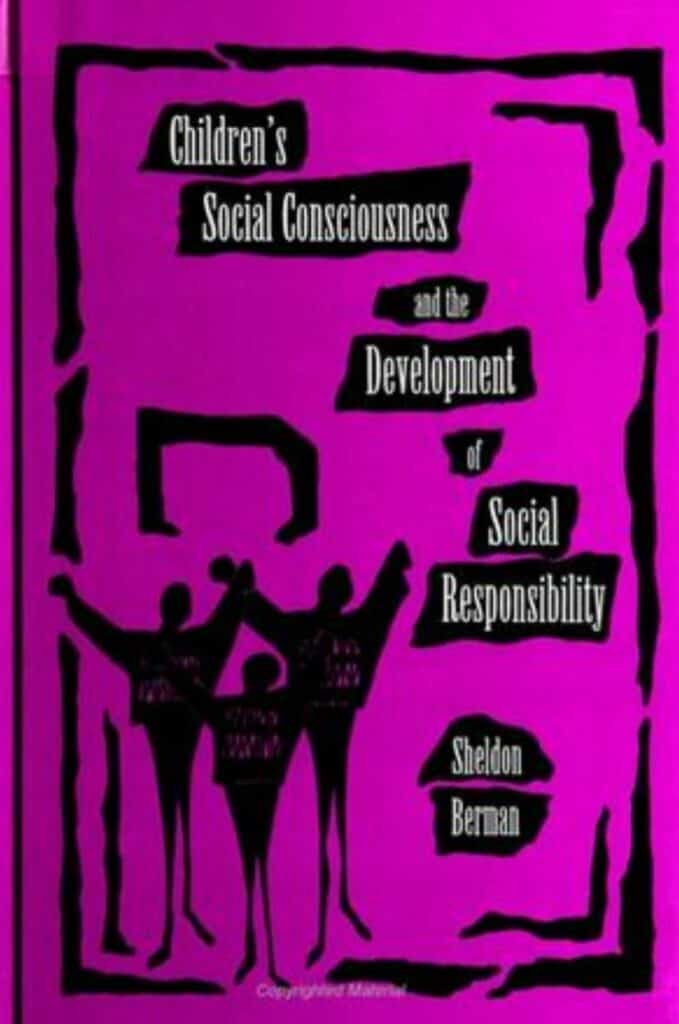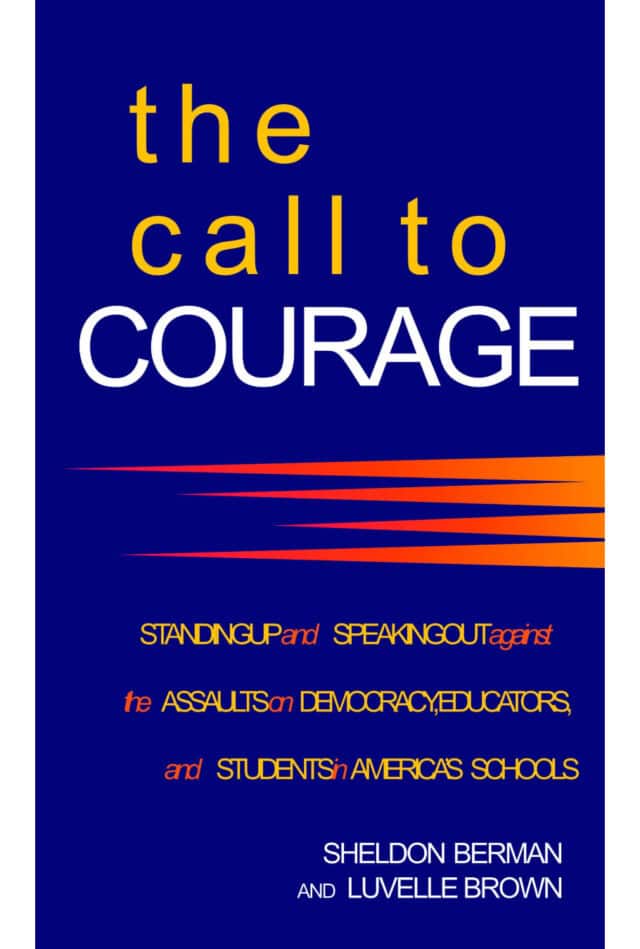Dr. Berman is currently AASA’s Lead Superintendent for Social-Emotional Learning after serving as superintendent across 28 school years in four school districts. In that role, he led AASA’s SEL Cohort for three years and is continuing to support school districts across the country in their implementation of social-emotional learning. He has a rich experience in SEL. In each district where he served as superintendent, he implemented systemic SEL programs, as evidenced in the articles, webinars and materials posted below as well as in recognitions received by the districts (see the Awards tab of this website). He has authored numerous articles and books on SEL topics, including The Call to Courage: Standing Up and Speaking Out Against the Assaults on Democracy, Educators, and Students in America’s Schools;Implementing Social-Emotional Learning: Insights from Districts’ Successes and Setbacks; Children’s Social Consciousness and the Development of Social Responsibility; and Promising Practices in Teaching Social Responsibility.
Dr. Berman was a member of the Council of Distinguished Educators of the National Commission on Social, Emotional and Academic Development and was the primary author of the Commission’s SEL practice report. He was also a member of the Leadership Team that founded the Collaborative for Academic, Social and Emotional Learning (CASEL). He has served on a number of other boards and organizational initiatives supporting SEL, including the Board of Directors for the Character Education Partnership (1995–2001), the Advisory Council for the Open Circle Social Competency Program (2001–2007), and the Community Service Learning Board of the Massachusetts Board of Education (2000–2007). He was a founder and president of Educators for Social Responsibility and served on its board for 33 years. He is the recipient of lifetime achievement awards from CASEL and Character.org for his work in social-emotional learning, character development, and the development of social responsibility.
National-Commission-Practice-ReportDownload The Practice Base for How We Learn Here >
Implementing Social-Emotional Learning: Insights from School Districts’ Successes and Setbacks
SHELDON H. BERMAN

Implementing Social-Emotional Learning: Insights from Districts’ Successes and Setbacks provides essential insights into the strategies that have enabled districts to effectively provide the benefits of social-emotional learning to their students. Building on case studies of six school districts that vary in size, geographic region, demographic diversity, per-pupil spending, staff capacity, and leadership style, this book offers indispensable observations about the factors that facilitate the deep integration of SEL into daily instruction and school culture. While the approaches these districts have taken vary in type and degree, clear-cut themes emerge that are common to the most successful strategies.
Building upon these case studies, Implementing Social-Emotional Learning: Insights from Districts’ Successes and Setbacks offers clear guidance so districts can avoid the errors that compromise implementation and can, instead, support district leaders in building successful and sustainable approaches that reach all students, including those at the challenging middle and high school levels.

Excerpt from the chapter 10: The SEL Roadmap: Avoiding the Roadblocks, Ruts, and Dead Ends by Sheldon Berman, Jacqueline Jodl, and Joyce Barnes.
As with many initiatives in education, the road to systemic implementation of SEL is embarked upon with good intentions—and then the obstacles come into view around the bend. The field of SEL has grown dramatically as districts’ SEL programming expanded in the United States. What we know from observing this expansion is that districts begin at very different points and set off down this path motivated by widely divergent rationales. Some districts start by formulating well-intentioned and well-designed strategic plans; others choose opportunistic moments that catch the imagination and interest of faculty and administrators; and still others seize upon SEL as a vehicle to address an urgent crisis. Each district follows a unique path based on the context of its cultural and political environment. It is clear that there is no one best path, or one best program; rather, for those who would make progress, there is a layering of program development and a gradual deepening of fidelity to a vision. This chapter, then, is intended not so much to provide a uniform roadmap as it is to let those who have chosen this road know where the obstacles, ruts, and roadblocks may lie, so that strategies can be put in place to effectively avoid or work through them.

Children’s Social Consciousness and the Development of Social Responsibility
This book breaks new ground in our understanding of the development of social consciousness and social responsibility in young people and the educational practices that promote this development. Berman shows that children’s awareness of the social and political world emerges far earlier and their social and moral abilities are more advanced than we thought. Drawing on the research literature in such fields as moral development, citizenship education, political socialization, prosocial development, and psychosocial development, Berman provides educators and researchers with the developmental understandings and instructional strategies necessary to enable students to become active, caring, and responsible members of our social and political community.
Praise for Children’s Social Consciousness and the Development of Social Responsibility
This is not another eclectic survey of school programs aimed at children becoming caring, responsible people. Shelley Berman is deeply knowledgeable about relevant theory, research, and practice, and is able to penetrate to the heart of the matter. He gives us a powerful framework for understanding children’s development, and he uses it unerringly to identify the educational approaches that prepare children to live out their roles with integrity and compassion. This work makes an important contribution to the field of social and ethical development.
–Eric Schaps, President, Developmental Studies Center
I believe this book pushes the field of educational and developmental psychology to a new level. It addresses some of the most pressing issues of our time. The importance of the development of a socially responsible citizenry capable of working effectively toward the common good cannot be underestimated in a society torn by privatism and individualism as is ours.
–Mary Fields Belenky, University of Vermont, co-author of Women’s Ways of Knowing
Berman pushes us to consider how more than service opportunities or isolated courses in contemporary issues will be needed if students are to become engaged citizens. In doing so, he lays the groundwork for a movement to reclaim the civic purposes that once undergirded American education. Achieving this end will require transformation of curriculum, instruction, and school structures aimed at incorporating multiple perspectives, providing more room for student voices, and supporting the formation of interactive school communities in which students feel cared for and influential.
–Gregory Smith, Lewis and Clark College, author of Education and the Environment: Learning to Live with Limits
Interview for Research for Better Teaching
tribute-to-weissberg-and-schapsCommunicating the “Learning” in Social Emotional Learning – Learning Policy Institute >
CAS-2-0005Download the Case Study Here >
berman-implementing-selWhat Works in Education
In this Edutopia.org article on Social and Emotional Learning, Sheldon Berman and other experts discuss how educating the whole child by including social and emotional skills with academics is critical for success in school and in life.
Watch Sheldon’s full interview below:
Watch the Full 4-Part Series Here
Citations:
The district and central office role in SEL implementation (with Melissa Schlinger and Karen VanAusdal). In Durlak, J. A., Domitrovich, C. E., & Mahoney, J. L. (Eds.). Handbook of social and emotional learning (2nd ed.). New York: Guilford Press, (2024).
Berman, S. (2024, September 19). Getting SEL implementation right. AASA. https://www.aasa.org/resources/resource/getting-sel-implementation-right
Rose, J. (Host). (2024, April 24). Leader Chat: Ep83 – Social Emotional Learning, From Recognition to Action with Sheldon Berman. Cognia. Webinar:https://vimeo.com/933360413/3a9947196d. Podcast: https://podcasts.apple.com/us/podcast/episode-83-social-emotional-learning-from-recognition/id1456969336?i=1000654966474
Implementing Social-Emotional Learning: Insights from Districts’ Successes and Setbacks. Lanham, Maryland, Rowman & Littlefield, 2023.
The SEL roadmap: Avoiding the roadblocks, ruts, and dead ends (with Jacqueline Jodl and Joyce Barnes). In S. E. Rimm-Kaufman, M. J. Strambler, & K. A. Schonert-Reichl, (Eds.). Social and Emotional Learning in Action: Creating Systemic Change in Schools. New York: Guilford Press, 2023.
Berman, S. (2023, December 5). Insights from districts effectively implementing systemic change in SEL. [Virtual keynote address]. Branching Minds. https://www.youtube.com/watch?v=_jgaCYEakK8
Berman, S., Lesan, A., Vasquez, V., & Brunn, P. (2023, October 11). Implementing SEL: Finding success, avoiding setbacks. [On-demand webinar]. Collaborative Classroom. https://info.collaborativeclassroom.org/implementing-sel-successes-and-setbacks
Berman, S., & McKown, C. (2023, April 25). How to empower your district with effective SEL [Webinar]. xSEL Labs & 7 Mindsets. https://xsel-labs.com/webinar/how-to-empower-your-district-with-effective-social-emotional-learning/
Berman, S., & Samuel, A. (2023, February 3). Reclaiming the narrative on SEL: Strengthening parent support [Webinar]. AASA, the School Superintendents Association. https://us02web.zoom.us/rec/play/BF89lcPAGVcFKP6xc5pH6LUSSuf8ybbbi9dQAAZ0K2PSAsIy1CKNt8I3_8zmE55gRGvtrSvR6kug74ka.LBsdZnnpodZibGke?continueMode=true
Saphier, J. (Host). (2022, September). Shelley Berman—A comprehensive approach to SEL for teachers and leaders [Video file]. In RBT Interview Series. Research for Better Teaching. https://www.rbteach.com/videos/collection/8
Berman, S., Bergthold, L., Fournier, R., & Vetter, J. (2022, February 8). Effective strategies for responding to pushback against social and emotional learning [Webinar]. Education Development Center (EDC). https://solutions.edc.org/solutions/education-wellbeing/events/effective-strategies-responding-pushback-against-social-and
Remembering two who brought us to SEL. School Administrator, Vol. 79, No. 2, February 2022.
Berman, S., & Darling-Hammond, L. (2021, November 8). Communicating the “learning” in social-emotional learning. [ Blog series]. In Educating the Whole Child. Retrieved from https://learningpolicyinstitute.org/blog/communicating-learning-social-emotional-learning
A path to equity paved by social-emotional learning. School Administrator, Vol. 78, No. 7, August 2021.
Jacobs, Larry (Host). (2021, July 27). An AASA speak-out on the importance of social-emotional learning, with Dr. Sheldon Berman, Lisa Xaga, and Angelyn Nichols. [Audio podcast episode]. In Education Talk Radio PreK-20. BlogTalkRadio. https://www.ace-ed.org/an-aasa-speak-out-on-the-importance-of-sel/
A compelling moment for social-emotional learning. Education and Career News. March 23, 2021.
CASEL. (2020, November 17). Key priorities for evidence-based SEL practices: Mary Utne O’Brien Award. Remarks by recipient Dr. Sheldon Berman [Video file]. https://www.youtube.com/watch?v=1D1xUjkK4mg&feature=youtu.be
Berman, Sheldon. (2020, November 9). Building teacher capacity for SEL through community. Guest blog posted to https://casel.org/guest-blog-sheldon-berman/
Berman, Sheldon. (2020, May 12). SEL leadership in a virtual world. Message posted to https://aasa.org/LeadershipBlog.aspx?id=44708&blogid=84067
Berman, S., Marschhausen, J., Moore, C., & Walker, M. (2020, May 4). Incorporating SEL into back-to-school planning [Webinar]. Edweek. https://panoramaed.wistia.com/medias/ns7veq9h5o
Berman, S., & McKown, C. (2020, April 30). Closing rituals and traditions matter: Finding meaningful ways to close the 2019-2020 school year [Webinar]. ERDI. https://myemail.constantcontact.com/Connecting-the-ERDI-Community-during-COVID-19.html?soid=1130569056326&aid=WCsf7ooAtWA
Jacobs, L. (Host). (2020, April 15). Social emotional learning in the age of remote education, with Dr. Sheldon Berman. [Audio podcast episode]. In Education Talk Radio PreK-20. BlogTalkRadio. https://www.blogtalkradio.com/edutalk/2020/04/15/social-emotional-learning-in-the-age-of-remote-education
Equity: At the heart of social-emotional learning. AC&E–Access, Compliance & Equity in Education, online journal of the American Consortium for Equity in Education, March/April, 2020.
Paying tribute to 50 years of sunny days on Sesame Street. The Eagle Tribune. November 10, 2019
Practice Agenda in Support of How Learning Happens (with Ron Berger, Joshua Garcia and John Desse). Report of National Commission on Social, Emotional and Academic Development, The Aspen Institute, Washington, D.C., January 14, 2019.
Implementing social emotional learning. School Administrator, Vol. 75, No. 8, September 2018.
This is the teaching that prepares kids for real life — and it’s no longer optional. The Hechinger Report. April 12, 2018
The practice base for how we learn: Supporting students’ social, emotional, and academic development (with Sydney Chaffee and Julia Sarmiento). Consensus statements of evidence from the Council of Distinguished Educators of the National Commission on Social, Emotional and Academic Development, The Aspen Institute, Washington, D.C., March 12, 2018.
The district superintendent’s role in supporting prosocial education (with Florence C. Chang and Joyce A. Barnes). In Ann Higgins-D’Alessandro, Phil Brown, Mike Corrigan, & Betty W. Straub (Eds.), The Prosocial Education Handbook. Lanham, MD: Rowman & Littlefield, 2012.
The connection between character, service, and social-emotional learning, (with M. McCarthy). In M.J. Elias & H. Arnold, (Eds.), The Educator’s Guide to Emotional Intelligence and Academic Achievement: Social-emotional Learning in the Classroom. Thousand Oaks, CA: Corwin Press, 2006.
Character education: Hudson, Massachusetts, public schools. Orbit, Vol. 33, No. 2, 2003.
Respect and responsibility: Building a caring high school community, Perspectives, Massachusetts Association for Supervision and Curriculum Development, January 2003.
A guiding framework for character education. Update on Law-Related Education, Vol. 20, No. 1, Winter 1996.

